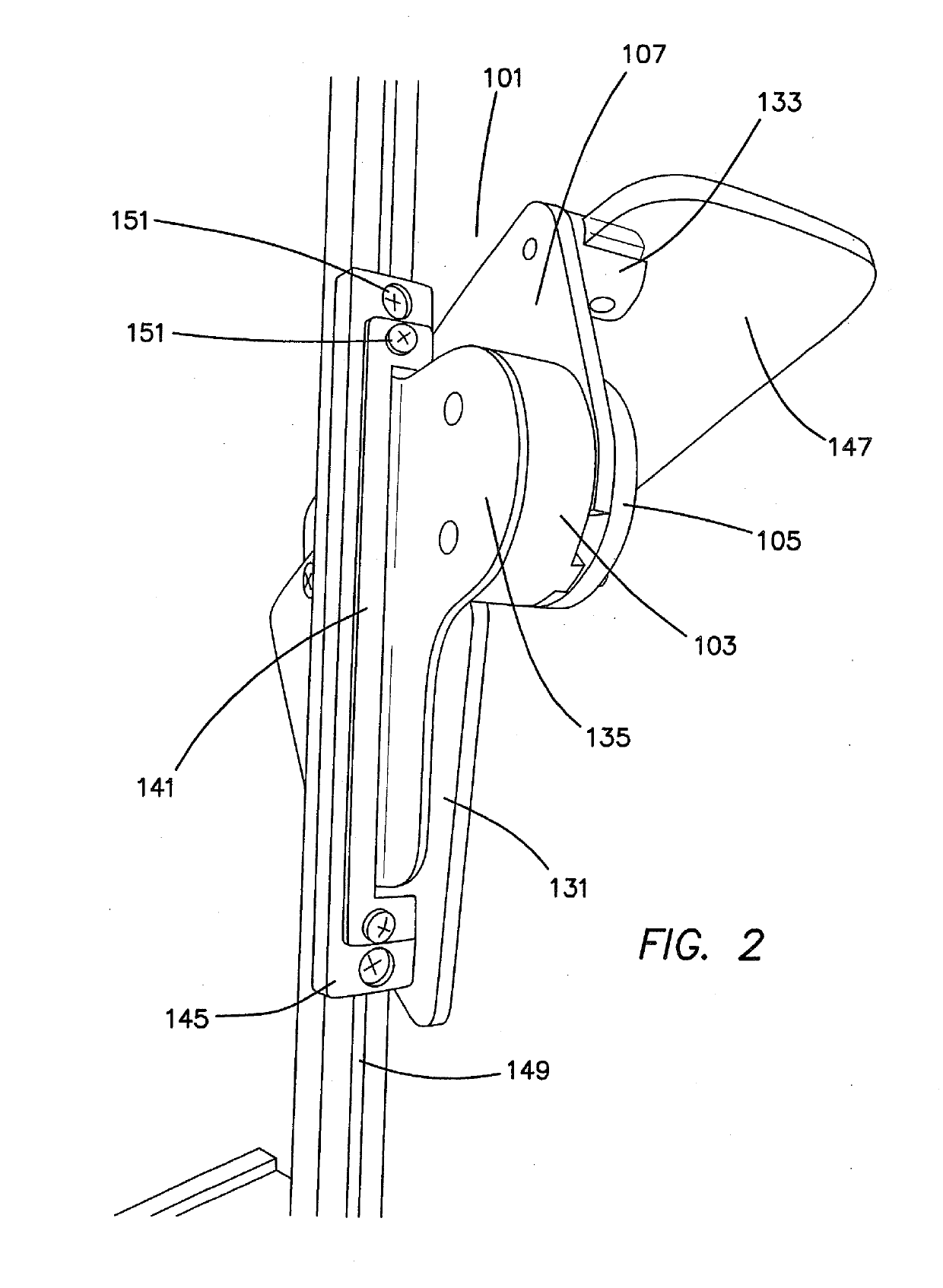Rotating Hinge and Sneeze Guard
a technology of rotating hinges and hinge components, which is applied in the direction of door/window fittings, applications, construction, etc., can solve the problems of severe limitations of non-adjustable hinges, and achieve the effects of simple, elegant and flexible, easy installation, and rotational adjustmen
- Summary
- Abstract
- Description
- Claims
- Application Information
AI Technical Summary
Benefits of technology
Problems solved by technology
Method used
Image
Examples
Embodiment Construction
[0063]The following examples are intended to provide additional clarity to specific embodiments and aspects of the invention or inventions, which are not limited thereby. The invention(a) are defined solely by the claims.
[0064]FIG. 1 is an exploded view of an adjustable hinge assembly 101 of the present invention. The adjustable hinge assembly comprises a first retaining plate 103, a second retaining plate 105 and a rotatable arm 107. The first retaining plate comprises a tapped axial cavity 109 on its inner surface, as does the second retaining plate (not visible in FIG. 1). The rotatable arm has an axial hole 111 through which retaining screw 113 is introduced when the hinge is assembled. In the embodiment shown in FIG. 1, the retaining screw 113 is threaded at both ends so it may be screwed into the axial cavity of the first and second retaining plate 109. Those of ordinary skill in the art will recognize that in other embodiments the hinge may be designed to have an retaining bo...
PUM
 Login to View More
Login to View More Abstract
Description
Claims
Application Information
 Login to View More
Login to View More - R&D
- Intellectual Property
- Life Sciences
- Materials
- Tech Scout
- Unparalleled Data Quality
- Higher Quality Content
- 60% Fewer Hallucinations
Browse by: Latest US Patents, China's latest patents, Technical Efficacy Thesaurus, Application Domain, Technology Topic, Popular Technical Reports.
© 2025 PatSnap. All rights reserved.Legal|Privacy policy|Modern Slavery Act Transparency Statement|Sitemap|About US| Contact US: help@patsnap.com



